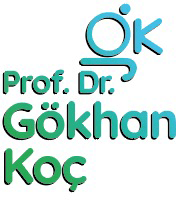
How Should Postoperative Follow-up and Care Be After Undescended Testis Surgery?
Undescended testis is the condition where one or both testicles are not present in the scrotum in male children. It is seen at a very high rate of about 33% in babies born at 7 months, and at a rate of 6% in full-term babies, but most descend over time.
It is observed in about 1% of one-year-old male infants. If a child is diagnosed with undescended testis, the treatment is either surgery or the approach determined by your doctor.
Undescended testis surgery may rarely result in certain complications.
These complications may occur depending on the presence of infection at the surgical site. To prevent such situations, it is important that the surgery is performed correctly and that wound care is managed properly.
Although rare, testicular torsion (twisting of the testis) may occur. Early detection of testicular torsion is crucial, as timely intervention is necessary to save the testis.
The critical window for early diagnosis is about 6 to 8 hours. If more than 24 hours pass, the chance of saving the testis is significantly reduced.
Therefore, during the postoperative recovery period, it is very important to keep the testicles under constant observation and to contact the doctor immediately if any abnormality is noticed.
About 2 hours after surgery, the patient can be fed according to the instructions of the doctor or nurse. Children over 2 years old can usually be discharged home after 4 to 6 hours.
Newborns may need to stay in the hospital for a full day. After surgery, the patient only needs to take painkillers as prescribed by the doctor; no additional medication is usually required.
The patient is examined by the doctor about 48 to 72 hours after surgery. During this time, dressing changes are not usually necessary, and the stitches dissolve on their own unless complications arise.
The patient can return to normal daily activities as advised by the doctor after surgery.
After undescended testis surgery, the likelihood of recurrence is very low. However, if there is damage to the testicular artery or vas deferens during surgery, this can lead to loss of the testis. Therefore, it is essential that the surgery is performed by a pediatric urology specialist with specific training and experience in this field.
Individuals diagnosed with undescended testis in childhood can have children. If the surgery is performed before 18 months of age, the chance of fatherhood is almost the same as those without this condition.
In children diagnosed with undescended testis, the risk of developing testicular cancer is much higher than in those without this problem—about 7 to 14 times higher.
Therefore, it is very important for males with a history of undescended testis to have regular check-ups during adolescence and adulthood, which also helps minimize the risk of other potential problems.
Retractile testis cases (testes that move up and down) do not require medical or surgical treatment, but should be closely monitored until adolescence, and necessary precautions and follow-up should be carefully performed.

Social Media